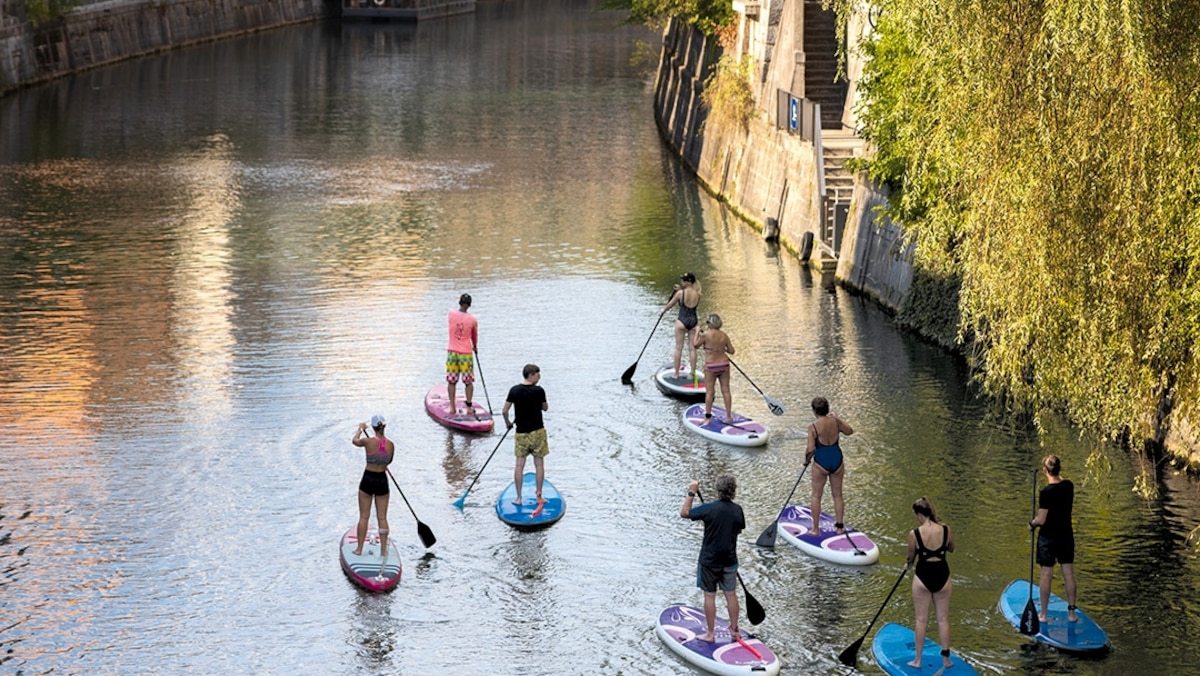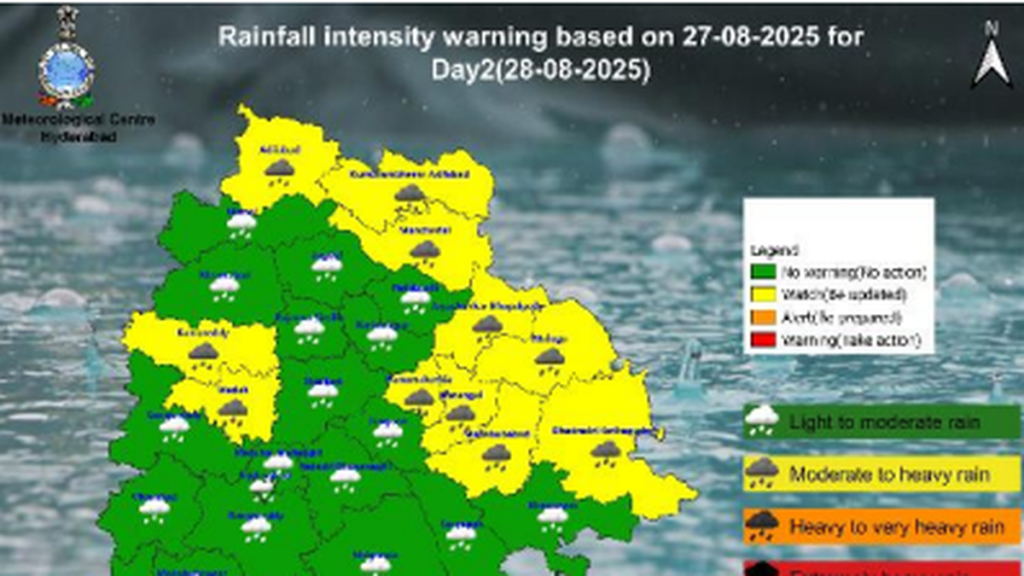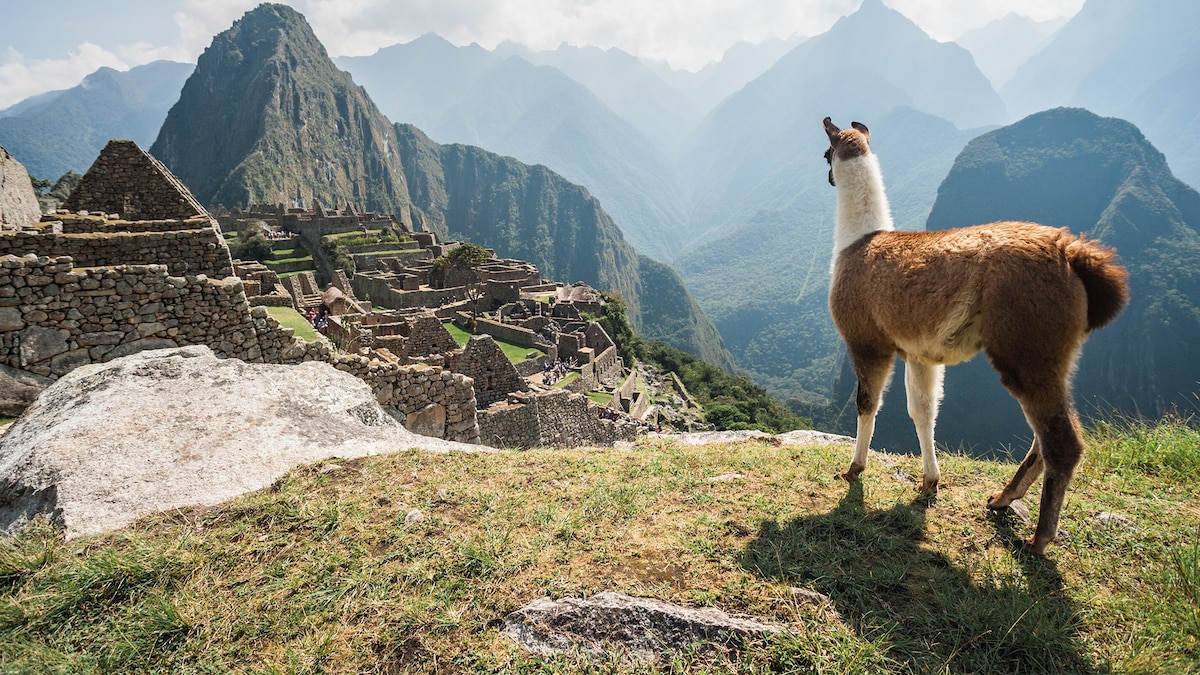Now Reading: European Cities Open Doors to Adventure: How You Can Join In
-
01
European Cities Open Doors to Adventure: How You Can Join In
European Cities Open Doors to Adventure: How You Can Join In

This article was produced by National Geographic Traveller (UK).
Packing for a city break used to involve comfortable shoes, a smart casual outfit or two, a big appetite and a sturdy liver. Indulgence was the focus, with a little light sightseeing to ward off the gout.
The contents of today’s carry-ons can look very different: swimsuits, trainers, hiking boots, waterproofs, sports kit and perhaps even a little Lycra. And that’s because, in many of our favourite European cities, there’s an awful lot more than tasting menus and artisanal wine to get stuck into.
Cycle paths and jogging trails are now standard — an integral part of all but the most overtly sedentary cities. However, in recent years, a whole host of outdoor urban adventures have been added, offering visitors a fresh perspective that’s both exhilarating and endorphin-fuelled.
Paddleboard through the ancient heart of Ljubljana. Abseil off a bridge 230ft above the Douro in Porto. Swim in a converted barge in Berlin. Surf in a former canal in Rotterdam. Kayak past 13th-century palaces in Stockholm. Ski down, or clamber up, a power plant in Copenhagen. The options are as varied as they’re innovative.
Elsewhere, travellers can blend their sightseeing with stadium climbs and rooftop hikes, freerunning adventures, canoe excursions, e-bike expeditions and — in certain coastal cities — an introduction to e-foiling (surfing without all the strenuous paddling).
So, what’s driving this change? A post-pandemic focus on both physical and mental health, certainly. A recent report by Neilson Beach Clubs, who have resorts across Europe, including Greece, Croatia and Sardinia, found that more than three-quarters of those polled now embrace activity on holiday — a pattern which is mirrored in the city-break sector. “With health and fitness now such an integral part of our culture, people are turning to holidays that have an emphasis on wellbeing over traditional sightseeing,” says the CEO of Neilson, David Taylor.

In Slovenia, paddleboarders can often be seen making their way down the Ljubljanica River on a sunny day.
Photograph by Getty Images, Robert Pavsic
Lena Andersson started Go! Running Tours in Copenhagen in 2013. A dozen years on, the sightjogging company, which combines running with sightseeing, operates in nearly 80 cities worldwide — more than half of them in Europe. The running boom only partly explains the proliferation, she thinks; for every habitual jogger she and her network of guides cater for, there are plenty of new runners looking to enliven their city break with something unusual and immersive.
“Visitors want to get beneath the surface of a city,” she says. “They want to mix, interact and connect with a local, get tips and recommendations. By the end of a tour, someone will have seen the main sites, sure, but they’ll also know all about the guide who accompanied them. They’ll uncover their go-to coffee spots and favourite restaurants.”
While some city breakers are bringing their active lifestyles with them, others are being nudged this way by the destinations themselves. Facilitated by warmer climes, more hours of sunshine or ‘human-centred’ urban planning, many of Europe’s city-break destinations have activity in their DNA. And it’s something visitors increasingly want to experience.
“People don’t come to Copenhagen for big tourist attractions, as we don’t really have those,” says Giuseppe Liverino, of Wonderful Copenhagen, the Danish capital’s tourism board. “They come for the lifestyle. Cycling everywhere, renting a kayak, taking a sea swim or an ice dip followed by a sauna. These aren’t contrived activities — this is what the locals do. These days, what visitors want is a blend of authentic and ‘outside the box’ experiences.”

CopenHill is a unique waste-to-energy plant in Copenhagen with a ski slope and climbing wall on its roof.
Photograph by Amélie Louys
Giving back
Lena believes environmental sensitivities feed into the trend. “If you’re coming to a city and you’re using your own power to get around, that’s reducing the impact on that place,” she says. Some visitors go further and seek to have a net positive effect. GreenKayak is a scheme that operates in around 20 European cities, allowing visitors to borrow a craft in exchange for collecting litter. To date, nearly 85,000 people have taken part.
“It’s a triple win,” says founder Tobias Weber-Andersen. “People get to be active, explore the city in a new way and give something back to the destination. You feel you’re contributing.”
Outdoor adventures have another benefit, particularly in our financially straitened times: affordability. Plan a city-break itinerary around landmark attractions, stage shows and destination restaurants and costs can quickly spiral. Go for a swim, grab a rental bike, a paddleboard or go rollerblading and the costs will be comparatively modest. For those who are time poor, it also showcases more, in less time.
The subtle but inescapable twinning of sport and destination marketing also feeds into the interest in active urban adventures. From Barcelona welcoming the America’s Cup to Paris hosting the Olympics last year, cities now woo big sporting events in the same way that brands have always courted big-name sports stars. Why? Because it puts them in the global spotlight, positions them as dynamic and active, and guarantees a generous flow of similarly minded visitors downstream.
Inevitably, social media plays its part. No one posts about a straightforward walking tour they went on; an eye-catching urban adventure is where the kudos lies (literally, in the case of the Strava app), and destinations are responding accordingly, dreaming up offerings that they know will generate traction on Instagram and other platforms.
This isn’t necessarily a bad thing, says Tobias. “We encourage people to use social media,” he says. “They can feel happy and proud about being active and doing something a little different. And we get the message across that our cities are something that need to be looked after.”

With almost 340 miles of cycle paths — and more being added all the time — Copenhagen is often ranked as the world’s most bicycle-friendly capital.
Photograph by Getty Images, Alexander Spatari
Three action-packed cities to visit
1. Rotterdam
While its northern neighbour, Amsterdam, wrestles with overtourism, the Netherlands’ second-most visited city continues to refine what one might call ‘optimised tourism’. Its obliteration by German bombing raids in the Second World War left post-war planners with what amounted to a blank canvas; the result is a city as open and efficient as it is young and dynamic, with lots of green spaces and waterways.
Hike through the half-mile-long urban oasis of Dakpark, or Roof Park, so called because it’s elevated to optimise views of the port and surrounding city. Alternatively, back on the ground, join the rollerbladers, skaters and runners navigating the paths through the forested Kralingse Bos on the fringe of the city. There are jogging trails and an athletics track that’s open to the public at Roel Langerakpark and smooth cycle paths stitching the green spaces together. Urban swimming has been embraced in a big way, too. One of the best spots is Zwembad Rijnhaven, in the middle of the city, with sunbathing platforms and ladders into the water.
Why go now? In keeping with the city’s active and entrepreneurial spirit, the world’s first outdoor urban surf pool opened last summer in a former canal overlooked by Rotterdam’s neo-Renaissance city hall. A decade in the making, RIF0101 — named for the Dutch word for ‘reef’ and the postcode in which it’s located — generates immaculate waves, provides lessons, board and wetsuit hire, and even has a bar with a sprawling terrace. Canoes and SUPs can also be hired to explore the waterways fanning out from the pool. Still got some energy left? The highest abseil in Europe is on offer at the towering Euromast, on the edge of tranquil Het Park, with a descent of almost 330ft.
2. Copenhagen
In 2022, the Tour de France began with an eight-mile time trial through the streets of Copenhagen. Rarely has the race’s country-hopping prelude been staged in a more apt location. The Danish capital is the most bike-centric of all European cities, the consequence of smart, livability-focused municipal planning. As a visitor, you can’t help but get swept along. Hiring a bike is a breeze (most hotels as well as cycle shops rent them, or use apps such as Donkey Republic). With cars marginalised, the myriad of green spaces around the city are less polluted and full of trails for walking and running. Copenhagen hosts the world road-running championships next autumn, while ‘plogging’ — combining jogging and rubbish collection — is one of the activities that feature in the city’s CopenPay initiative. Set to be expanded this summer, it offers visitors perks and free experiences in exchange for ‘green’ activities.
Why go now? It’s the reinvention of the former military and industrial harbour as a giant waterborne playground that really sets the tone. The water is clean enough to yield mussels and oysters for the city’s restaurants and there are more than a dozen havnebadet (harbour baths). Outdoor pools such as Islands Brugge and Fisketorvet are popular year-round, despite the cold Scandic winters; and kayaking, waterskiing, canoeing, paddleboarding and other watersports are all on offer, too. CopenHill — a £500m world-first fusion of a green energy plant and an adventure centre — remains a huge draw. As well as a 1,640ft ski run and a climbing wall with dizzying views of the city, there’s a landscaped hiking trail planted with 200 trees winding up to Copenhagen’s highest viewing platform. As you burn off energy, the plant generates it.
3. Munich
Perhaps it’s the proximity to the Alps; or maybe its legacy of hosting huge sporting events. One thing is certain: this is a city that has activity in its veins. There are 745 miles of cycle paths, with 80% of Münchners estimated to own a bike, and dense pockets of green line the banks of the Isar, tempting both locals and visitors outdoors. Best known, perhaps, is the Englischer Garten — one of the largest urban parks in the world, and year-round, it’s a hive of activity. In summer, river surfers tackle the white water of the Eisbach, which flows off the Isar; wooden rafts are paddled downstream; and bathers and picnickers converge on the white-sand beaches. In the winter months, the 3.5-mile cross-country ski trail that weaves through the floodplains of the river is a big draw. Horse-riding excursions are available, and there are nearly 50 miles of trails through the park for joggers and cyclists.
Why go now? ‘Two hours at high altitude’ is how Munich’s Olympic Stadium bills its roof-climb experience, high above the hallowed turf on which the 1972 Olympics, and the World Cup final two years later, were staged. The tour culminates — if you’re daring enough — in a zip-line down to pitch level. For summer, the variety of pools and swimming spots within the city almost rivals Copenhagen. The Dantebad is heated to 30C throughout the year. Prinzregentenbad, across the Isar in the east of the city, has an outdoor pool and an adjacent river beach popular with volleyballers. And, for an alternative take on the palaces of Schloss Schleissheim and Schloss Nymphenburg, do as the Bavarian overlords once did and consider a ride in a Venetian gondola along the adjacent canals. After all that activity, a little sit down will be a welcome relief.
Published in the European Cities Collection 2025 by National Geographic Traveller (UK).
To subscribe to National Geographic Traveller (UK) magazine click here. (Available in select countries only).

























